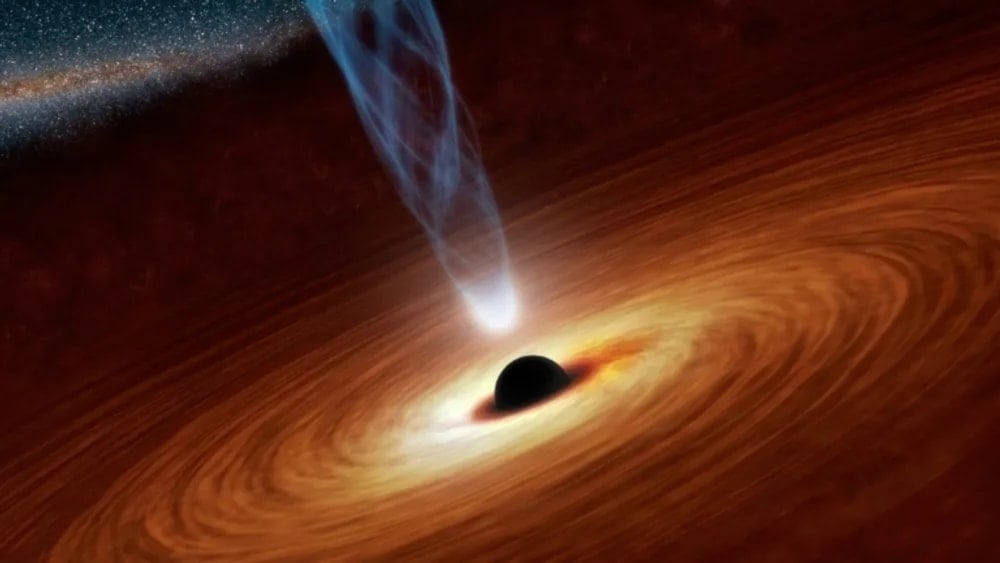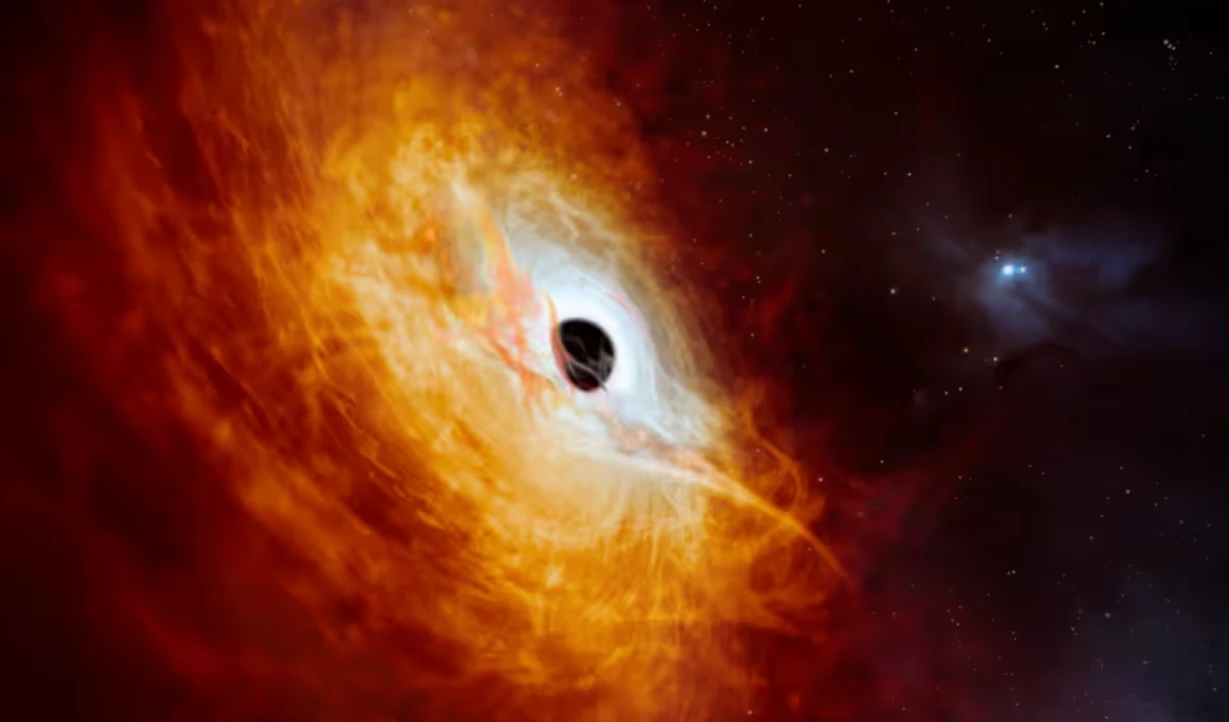Astronomers may have found the most massive black hole in universe
Astronomers detect a black hole 36 billion times more massive than the sun in the Cosmic Horseshoe galaxy, using a new gravitational lensing method.
-

Astronomers release photo of black hole, undated (AFP)
Astronomers have detected what could be the biggest black hole discovery in the known universe, a behemoth around 36 billion times more massive than the sun, in the Cosmic Horseshoe galaxy, one of the largest known galaxies in existence.
The finding, published in the Monthly Notices of the Royal Astronomical Society, places the black hole close to the theoretical upper mass limit for such objects.
"This is amongst the top 10 most massive black holes ever discovered, and quite possibly the most massive," said Thomas Collett, co-author of the study from the University of Portsmouth.
Located about five billion light years away, the Cosmic Horseshoe galaxy is so massive that it bends spacetime, warping the light of a background galaxy in a phenomenon known as gravitational lensing. Researchers believe this ultramassive black hole is the result of multiple galaxy mergers over cosmic time.
How scientists measured the colossal mass
Unlike previous measurements, which often carry large uncertainties, this research used a combined approach. Scientists applied gravitational lensing to study the way the galaxy’s gravity distorts light, alongside stellar dynamics, measuring the speed and movement of stars within the galaxy, to estimate the black hole’s mass.
"Our approach, combining strong lensing with stellar dynamics, offers a more direct and robust measurement, even for these distant systems," said Carlos Melo of the Universidade Federal do Rio Grande do Sul in Brazil.
The Cosmic Horseshoe galaxy is a fossil group, the end state of galaxy evolution after neighbouring galaxies merge into a single massive entity. Collett noted that any supermassive black holes in the original companion galaxies likely merged to form the ultramassive black hole now observed.
The study’s technique opens the door to finding more hidden ultramassive black holes across the universe, even when they are dormant. Researchers aim to apply the method to data from the European Space Agency’s Euclid telescope to deepen understanding of how black holes influence galaxy evolution and halt star formation.
Astronomers discover universe’s brightest object
On a related note, astronomers discovered last year in February the brightest known object in the cosmos, a quasar 500 trillion times brighter than our sun, was "hiding in plain sight".
Australian astronomers have found a quasar fueled by the fastest-growing black hole ever discovered. Its mass is approximately 17 billion times that of our solar system's sun, and it consumes the equivalent of one sun each day.
The light from the astronomical object traveled almost 12 billion years to reach Earth.
Scientists from the Australian National University discovered it with a 2.3-meter telescope at the university's NSW Siding Spring Observatory in Coonabarabran. They then validated the discovery using the European Southern Observatory's (ESO) Very Large Telescope, which has an 8-meter main mirror.
The results of ANU researchers, in partnership with ESO, the University of Melbourne, and France's Sorbonne Université, were published in Nature Astronomy.

 3 Min Read
3 Min Read










